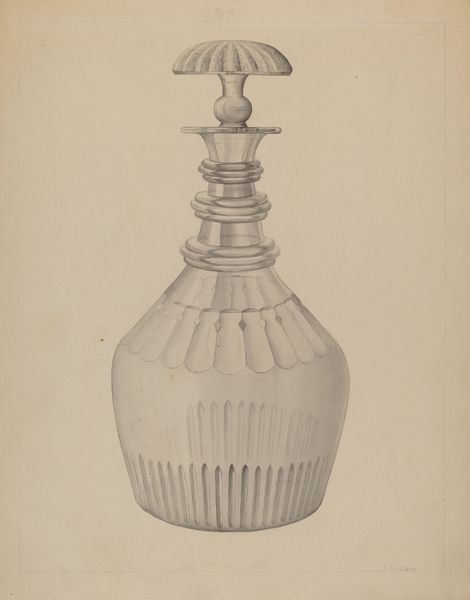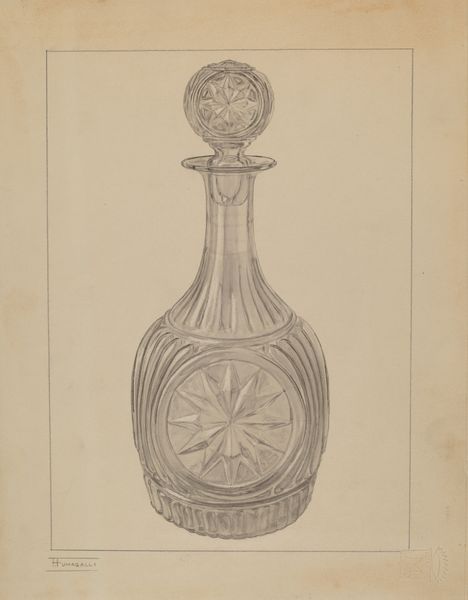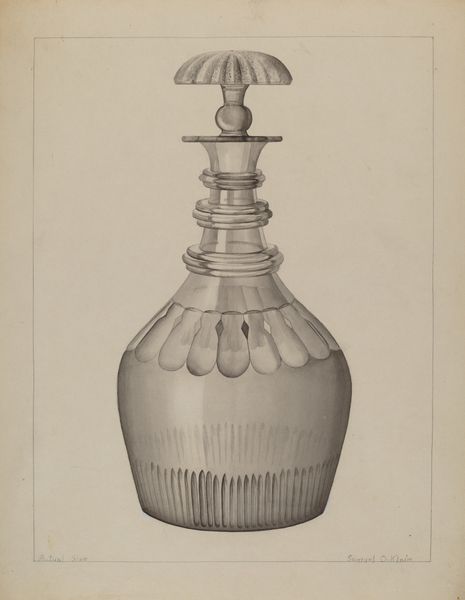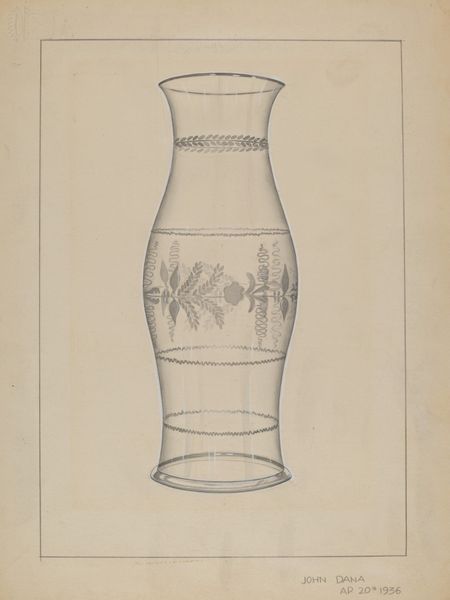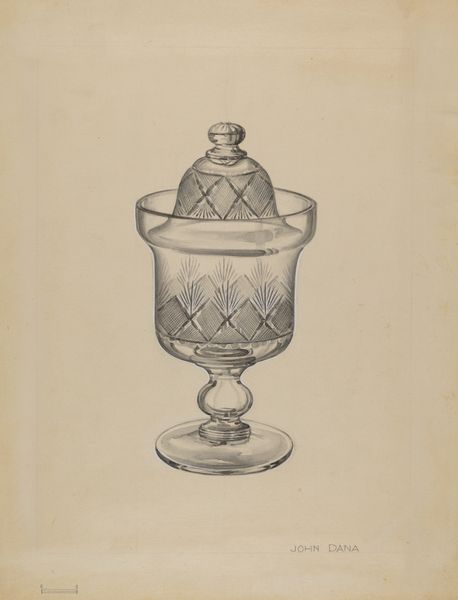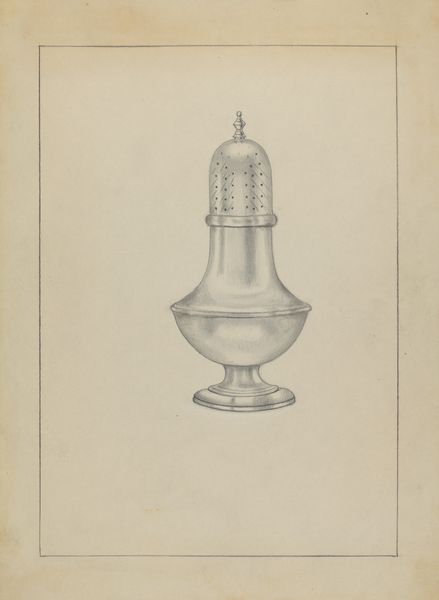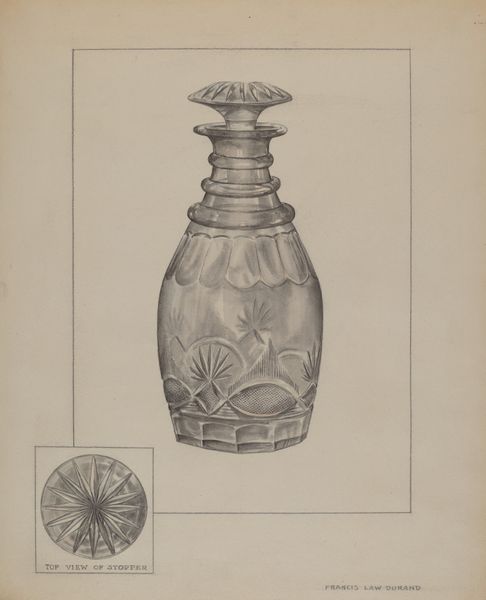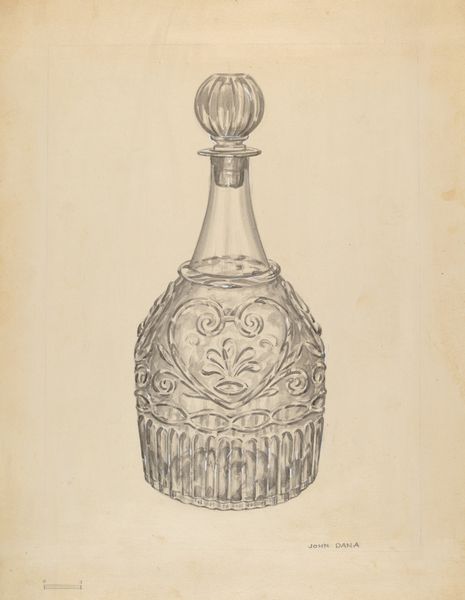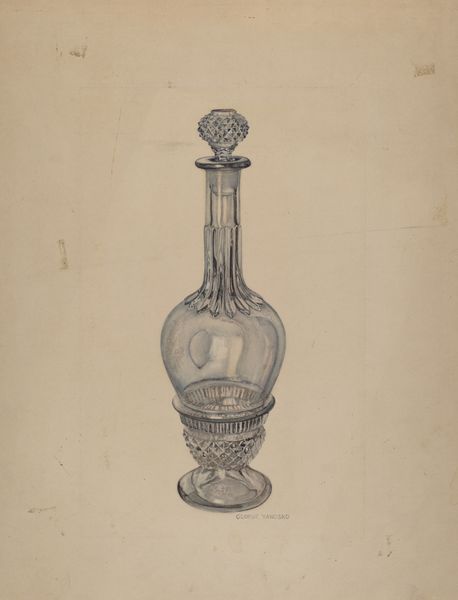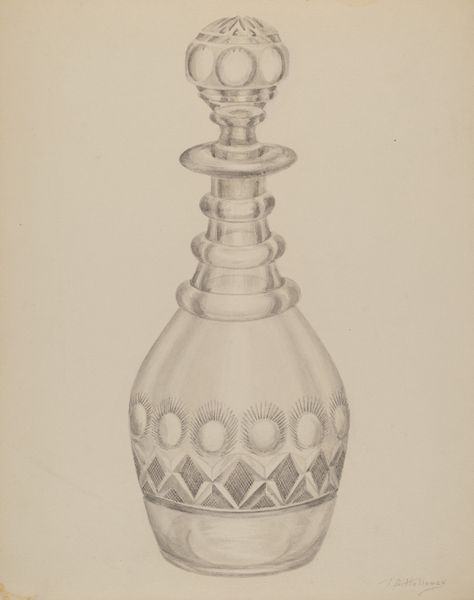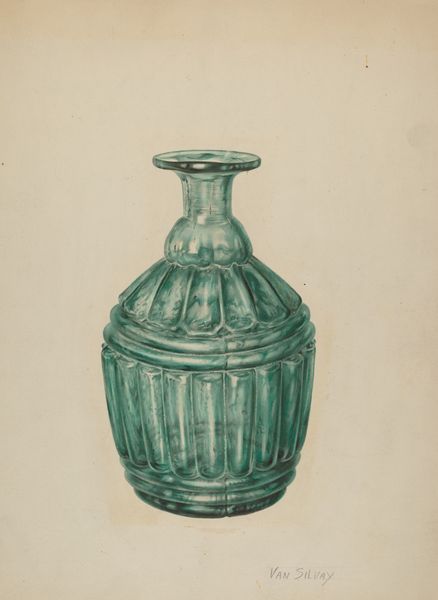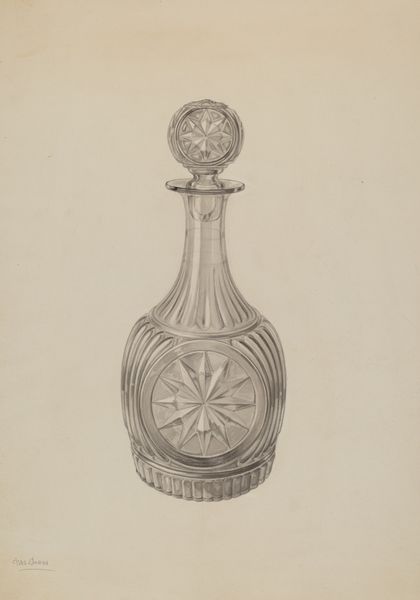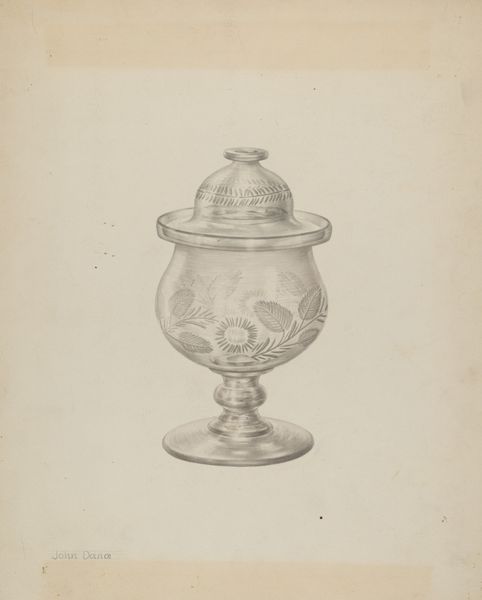
drawing, pencil
#
drawing
#
form
#
pencil
#
realism
Dimensions: overall: 30.1 x 22.6 cm (11 7/8 x 8 7/8 in.)
Copyright: National Gallery of Art: CC0 1.0
Curator: We're looking at a pencil drawing by John Dana from around 1937, titled "Decanter." Editor: It’s striking how the artist managed to convey the reflective quality of glass using only graphite. The delicate lines almost make it seem luminous. Curator: Absolutely. It’s interesting to consider the socio-economic context of its creation, likely the late Depression era. Alcohol and its accoutrements take on a certain meaning, doesn't it? Perhaps providing solace or an escape. Editor: I’m thinking about the process involved. The labor and craftsmanship needed to create both the actual decanter and this meticulously rendered drawing of it. Look at how the pattern repeats, yet isn’t perfectly uniform. Curator: It could speak to the rise of consumer culture and the aesthetic aspirations of the middle class during that period, the ways in which specific goods and drinking habits were associated with different identities and aspirations. Editor: Do you think the 'BRANDY' label affects its reception today? We see mass production reflected back at us with each repeated element of that complex geometric design, echoed across the bottle and recorded with pencil. Curator: The 'BRANDY' inscription highlights the object's specific function but could it also hint at something deeper, something to consider in the history of marketing, taste-making, and the objectification of desire through consumer goods? It's hard not to read a gendered element in the display, with liquor as traditionally a male pleasure. Editor: Seeing it solely as promoting pleasure might obscure its social history and material form, however. It is also, literally, a means of containing something: the design and production involved physical labour and the harvesting and blending of crops. A whole history is distilled inside. Curator: I see your point; perhaps this is about the illusion of affluence and pleasure rather than actual luxury. The drawing style suggests accessibility, mass production but is a single, uniquely rendered thing. Editor: And even that 'accessibility', to extend your comment, depended upon a web of connections—social structures and material conditions both shaped, enabled, and constrained what got consumed during the period. This decanter shows one possible vessel among others. Curator: Reflecting on our discussion, it's clear that this drawing invites us to examine our complex relationships with objects. Editor: Yes, prompting a look at labor, consumption, representation, all reflected back by one object: the humble "Decanter."
Comments
No comments
Be the first to comment and join the conversation on the ultimate creative platform.

